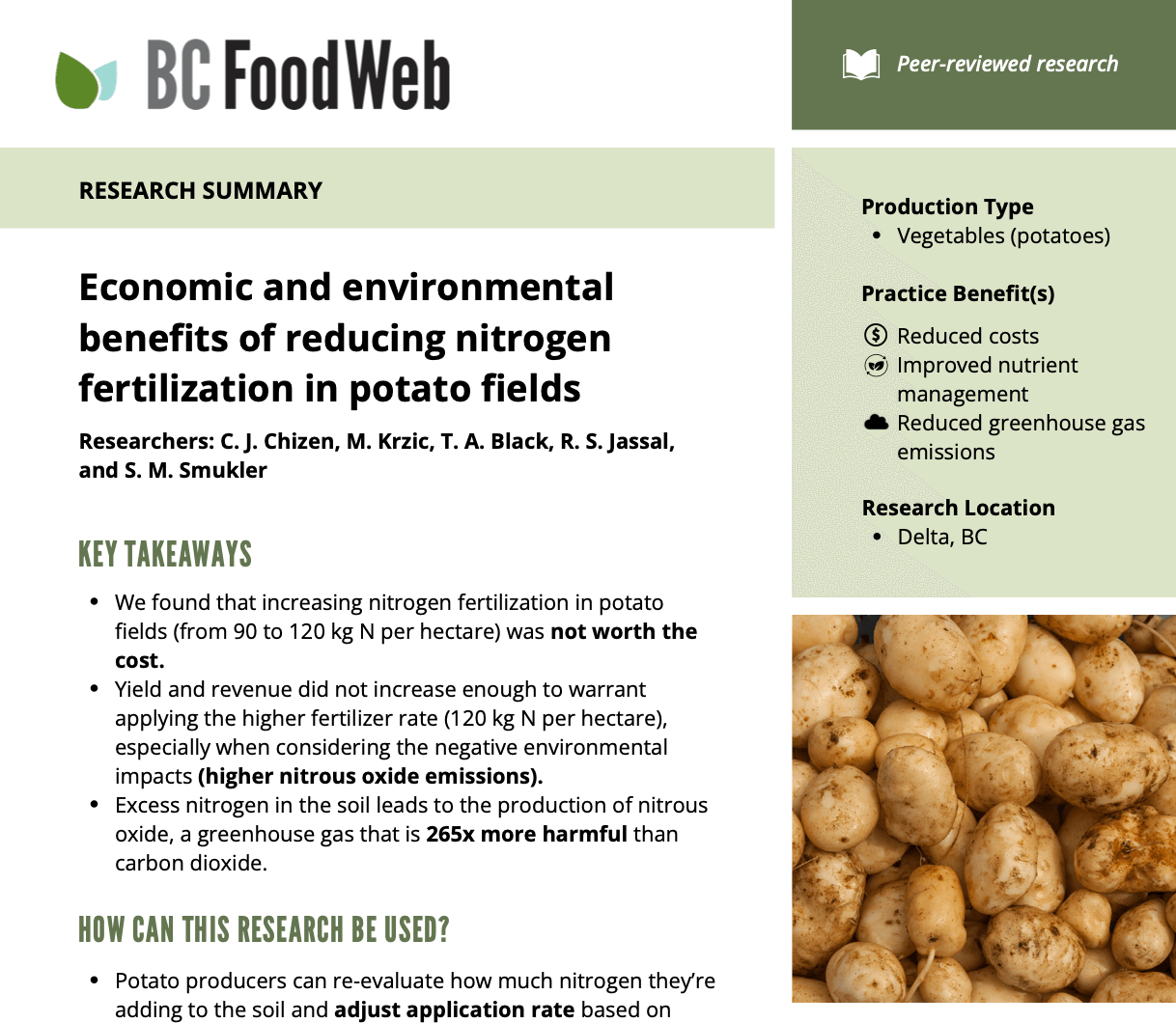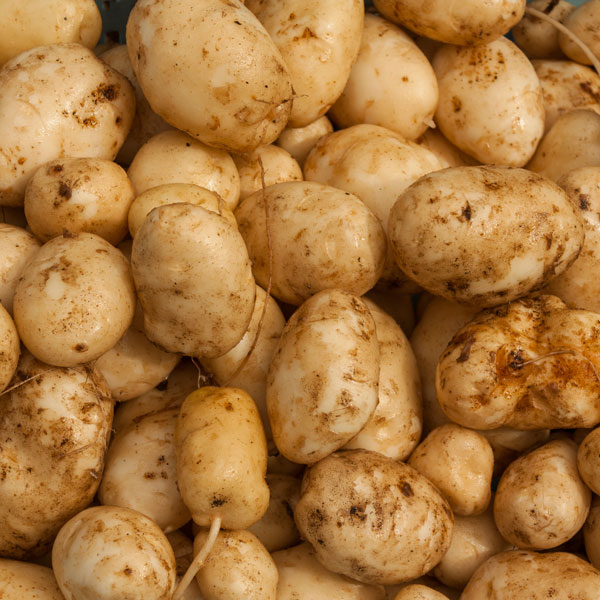Economic and environmental benefits of reducing nitrogen fertilization in potato fields
Introduction
This study evaluated the economic and environmental tradeoffs of three nitrogen application rates (0, 90, and 120 kg N per hectare) in potato production.
About this Brief
This brief was prepared by Juliana Cao from the BC Food Web team with the help of Chantel Chizen and is based on the following scientific journal article:
Chizen, C. J., Krzic, M., Black, T. A., Jassal, R. S., & Smukler, S. M. (2022). Nitrous oxide emissions from productive and degraded potato fields in the Fraser Valley delta of British Columbia. Canadian Journal of Soil Science, 102(4), 1000-1004. https://doi.org/10.1139/cjss-2022-0032
Key Findings
- Overall, increasing nitrogen fertilization in potato fields (from 90 to 120 kg N per hectare) was not worth the cost.
- Yield and revenue did not increase enough to warrant applying the higher fertilizer rate (120 kg N per hectare), especially when considering the negative environmental impacts (higher nitrous oxide emissions).



